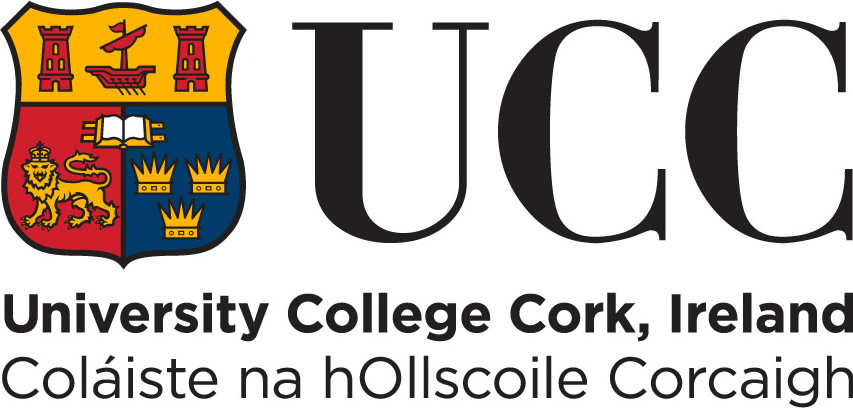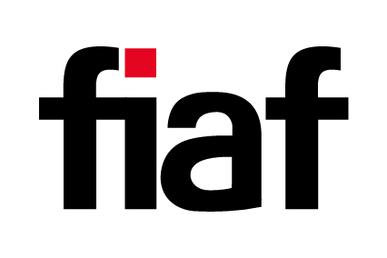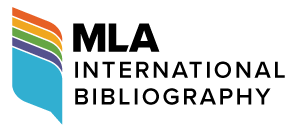How (Not) to Clap, Cheer or “Check the Box” on Diversity in the Film Classroom:
Some Notes on Teaching Diverse Documentary MediaAparna Sharma
Abstract
In this paper, I share approaches I use to develop a critical engagement with diversity in documentary media education. I discuss the inclusion and curation of diverse documentary media and interdisciplinary theoretical materials through which cinema can be recognised as a space of competing discourse formations and aesthetics. My classes on documentary media combine documentary and film studies, postcolonial and feminist thought and ethnography to equip students in developing a historically contextualised understanding of media texts. Through contextualisation, students are equipped to appreciate the sociohistorical worlds that documentaries depict/represent and the specific history of film aesthetics as they develop in dialectical relationship to the wider politico-cultural and economic frameworks within which films get made and circulate. I share a range of exercises students undertake that facilitate them in contextualising their own reactions to documentaries as tied to their subject positions and that alert them to the differences in the histories and social formations of the subjects they see on screen. This facilitates students in appreciating film texts on specific terms, for the work they do in the contexts of their production and reception. The paper uses specific examples of materials and approaches from courses I teach.
Dossier

Figure 1: West of the Tracks (Tie Xi Qu). Directed by Wang Bing, 2003. Image courtesy Wang Bing.
A call for diversity in higher education assumed renewed force following the critical 2020 iteration of the Black Lives Matter (BLM) movement in the United States. BLM 2020 resonated globally stirring actions towards greater inclusivity of “under-” and “mis-represented” subjects and scholarship (Morreira et al.; Boston College).[1] At the outset, it must be emphasised that increased access to higher education for students and faculty from underrepresented sections of society is key to building a more inclusive and solid education. Diverse bodies will bring lesser-understood perspectives and histories that will in turn push the boundaries of disciplines, reshaping their foundations and the very knowledge they offer.Furthermore, as an educator it seems necessary to me that this moment be used to examine the scope within existing disciplines to promote diversity. By disciplines I am specifically thinking of the arts and humanities that include the subjects of cinema, cultural studies, anthropology and media art history, among others. These are primary fields to which I am exposed and that inform my pedagogy. One might question which theories, discourses and tools are in place within these subjects that promote critical understandings of diversity? I urge for such re-examination because calls for diversity are not new to higher education. Particularly in film and documentary studies, a will to expose students to nonhegemonic (including non-Western) cinemas had led to the formation of world cinema and area-specific cinema courses. However, approaching whole categories such as “world”, “African”, “South-East Asian” or “Indian” cinemas as uniform areas of inquiry betrays a lack of complexity and density while understanding disparate cinemas.
As a practising documentary filmmaker and scholar, I have more than a decade of teaching experience in higher education institutions of the United States, United Kingdom and India. Pedagogically, I hold that teaching diverse media promotes understanding of how representational practices engage with—reinforce, interrogate, resist or contest—the histories of domination and hegemony perpetuated through, but not limited to, such structures as colonialism and patriarchy. Teaching about disparate practices and ecologies offers students grounding in the vast scope and potentialities of media that can empower them to develop a healthy questioning towards, and critical understanding of, media and the role they play in everyday lives. In my view, diversity in higher education should be more broadly geared towards promoting deep understanding of multiple and competing histories that shape lived experiences. In this paper, I share approaches that I use for developing a critical understanding of diversity while studying documentary media. These approaches are not exhaustive and are largely practised in the spirit of an effort to open issues and advance learning by exposing students to disparate documentary media practices.
Diversity in the Documentary Classroom: Foci and Frameworks
Documentary films offer rich exposure to varied social and cultural contexts, modes of storytelling and aesthetics. The exposure documentaries offer requires cultivation in the classroom so that students’ understandings can be deep, moving away from summary generalisations about the issues, peoples and places films depict. The documentary courses I teach draw from three fields of inquiry—documentary and film studies, postcolonial and feminist theory, and ethnography. Combined, these fields offer analytical frameworks for advancing a critical understanding of the agendas, practices and histories of cinema and media in specific contexts. Film studies pedagogy that includes classroom practices such as lectures, post-screening discussions, focus group discussions and research exercises are seldom exclusive from the critical discourse and theories that students are taught. Alongside concepts and arguments, critical theoretical discourses from the above fields shape the curating of media and the learning exercises students undertake in the classes I teach.
Exercise 1
One of the first exercises I conduct in class requires students to reflect upon and write what they consider is the value of studying documentaries from different societies. Students compose short written responses that are shared in class discussion to bring out their motivations. Respect for documentary as an educational medium and personal interest/curiosity are students’ often-cited responses. Discussing motivations alerts students to their own positionality and enables them to qualify their reactions to films as coming from specific (not universal) positions.
Exercise 2
Documentaries have come to be increasingly understood as subjective, making it vital to recognise standpoints operating within them. Michael Renov identifies the subjective dimension or the “personalist perspective” of a film as pertaining to the maker’s commitments and stakes (176). Bill Nichols adds that the representation of subjective experiences and embodied knowledges results in less stable forms of documentaries (1–2). For Nichols, this understanding of the instability of documentary forms aligns with film studies’ broader appreciation of film aesthetics as being context-specific. Geoffrey Nowell-Smith has asserted that context is key to the very existence and meaning of films (xix). Richard Dyer adds that “The aesthetic dimension of a film never exists apart from how it is conceptualized, how it is socially practiced, how it is received; it never exists floating free of historical and cultural particularity” (6–7). Understanding that context shapes both content and aesthetics equips students to consider that documentaries, and films more broadly, cannot be evaluated through abstract, universalist criteria.
To better appreciate the contents and aesthetics of films from contexts less familiar to students, I require them to undertake short research exercises through which they learn about the conditions in which filmmakers work, their sociocultural identities, associated agendas and how those may be operative in their films. Students source and study primary materials such as interviews and writings by filmmakers, film reviews in local presses, area or region-specific research guides and encyclopedias that facilitate them in learning about the immediate environments in which documentaries get made and circulate, including but not limited to such terms as the political histories, social conditions and cultural systems of those environments. As they learn about disparate backgrounds and conditions in which filmmakers make work, students grasp how documentaries are inherently unstable and open to varied aesthetic approaches and formulations.
An active differentiation between the contexts in which students learn and those to which documentary media expose them is needed to uphold a critical understanding of diversity. My emphasis on the differentiation between contexts derives from Third World feminist scholarship that has critiqued “discursive colonisation” and the use of analytic categories derived from hegemonic paradigms (primarily from Western Europe and the US) to study non-Western contexts and subjects (Mohanty 17–18).[2] Besides exercises discussed above, I ensure that classroom discussions are bracketed with prompts that remind students to consider contextual differences and, based on that, to ask how films tell what they do, how their aesthetics construct meaning. Such bracketing prevents students from making generalist evaluations and directs them towards responding to documentaries in terms of the circuits through which they come about and the work they do in those circuits.
Film Clusters and Discussions
A second approach I use to teach documentaries includes curating films from different societies, focusing on a common theme. Such curation brings out disparities in social-cultural formations and expands understanding of the concerned themes. The following discussion surrounds two clusters I curate in my documentary classes. They are shared to highlight how critical discourses can be mobilised to curate film texts with the aim of promoting a comparative understanding of common themes.
Cluster 1: Documentary and Labour
One cluster of films in the class “Documentary Theories and Approaches”focuses on representations of labour. Students watch early works such as Workers Leaving the Lumière Factory (La Sortie de l’usine Lumière à Lyon, Louis Lumière, 1895) and Man with a Movie Camera (Chelovek s kino-apparatom, Dziga Vertov, 1929) alongside select episodes from West of the Tracks (Tie Xi Qu, Wang Bing, 2003) and Cast in India (Natasha Raheja, 2014). This series introduces conditions of labour from different historical eras and geopolitical contexts. Vertov’s montage-based film is an early-twentieth-century celebration of mechanised labour, which reflexively aligns the camera with a Soviet, socialist imaginary. Bing and Raheja’s observational films offer a dismal depiction of industrial and semi-industrial practices that expose the dynamics of late capitalism, an international division of labour, and the precarity workers face in two of the world’s most densely populated countries.[3]
Cluster 2: Issues in Ethnographic Film
A second cluster focuses on ethnographic film with a view to bring out how power dynamics play out in the representation of cultures. Trinh T. Minh-ha’s Reassemblage (1982) is a necessary text in this series because it critiques how Western systems of knowledge exercise power to produce unreflexive and nonreciprocal understandings about “non-Western” societies. I build on Minh-ha’s critique and juxtapose Robert Flaherty’s Nanook of the North (1922) with contemporary works that respond to that film. Students are introduced to the problematic representation of Nanook as a noble savage frozen in a premodern past—a depiction predicated on what Fatimah Tobing Rony terms as “ethnographic taxidermy” (101). Ethnographic taxidermy is a mode of representation that sees indigenous peoples as dying, if not already dead, and their forms of living are understood as representative of a former time/epoch (101–03).[4] Students study the Inuk singer Tanya Tagaq’s response to the film (Gordon). Tagaqimprovises throat songs to accompany the film, giving it an indigenous, sonic body that contests the limited views about Eskimo life depicted in it.
Responses such as Tagaq’s find immediate resonance with students, who in post-screening discussions assert that films by insiders, those belonging to a society under consideration, constitute a corrective against colonial, extractive modes of knowledge. While deeply relevant, this understanding offers another occasion to assert that films embody makers’ specific standpoints and agendas. An “insider–outsider” dichotomy should not be reified with an “insider” position uncritically thought of as uniform or stable. Uma Narayan has termed as “colonialist” the tendency to view societies, particularly third world, as “monolithic” or “undifferentiated” (50). She adds that a colonialist stance can be countered by taking into account such complexities as historical changes, power relations and socio-economic differentiations within societies (43–44).[5] An emphasis on situating filmmakers in context by learning about the complexities and conditions in which they work resists seeing them as singular representatives of whole societies and nations—a tendency quite common in relation to non-Western filmmakers.
Conclusion
The intellectual reflection that BLM 2020 provoked offers a rare occasion to envision how diversity may be advanced in higher education. Any effort towards enhancing diversity must be understood as work: active conversations and thinking around difficult histories and lived experiences with a view to, a) make sense of the complex workings of power and privilege that shape societies and, b) consider the ways by which the voices of the disenfranchised and less-represented may be included in the higher education setting without being presented tokenistically or reductively.
For film and documentary education more specifically, BLM 2020 constitutes a call for rigorous work to promote the study of disparate cinema practices with a commitment towards a situated understanding of how those practices operate in relationship to the structures of power and the conditions in which films get made and circulated. The study of documentary media is often valued for its educative and provocative potential and while this should be recognised, students must also be equipped to understand the work documentary media perform in the contexts where they are sited. A critical and meaningful study of diverse documentary media requires recognising how positionalities, especially of filmmakers, operate in their films. Related to this, students should be alert towards the disparities between the worlds where they view films and those they see through them, so as to resist summary and unreflexive evaluations that may stem from their own positions.
Notes
[1] In India, where my research is sited, BLM 2020 inspired calls for greater access to higher education for minority, specifically lower-caste and Dalit students, alongside greater representation of their experiences and histories across disciplines. For a reading of the complex ways in which minorities and lower castes in India are structurally disadvantaged and marginalised, see the overview of key issues by India Civil Watch International.
[2] While discussing Third World feminism, Mohanty argues that discursive colonisation leads to the appropriation and colonisation of the “constitutive complexities” that characterise the lives of women in the Third World (19).
[3] Bing’s nine-hour epic West of the Tracks brings out the decline of a large industrial complex in northeastern China’s Shenyang province. Raheja’s film takes us to a small workshop in West Bengal where labourers use a semimechanised process to cast manhole covers that will make their way to the streets of New York City. Observational cinema is a form of ethnographic documentary that is characterised by an austere aesthetic in which meaning is created principally through film elements including framing, sound design and editing. No external criteria or elements such as didactic voiceovers or music are imposed on filmed realities to offer any interpretation. Anna Grimshaw and Amanda Ravetz note that observational cinema offers viewers a means for sensorially experiencing sociocultural landscapes and peoples’ lives through a “quiet mode of cinema” (4–8).
[4] For Tobing Rony, taxidermy in ethnographic representation is tied to the interrelated tropes of salvage ethnography and romantic preservationism, both of which perceive indigenous peoples as figures to be saved from extinction.
[5] Narayan contends that a “colonialist stance” is one that sees Third World societies as ahistorical and lacking in cultural and social variations (50).
References
1. The Boston College Centre for International Higher Education. International Higher Education,no. 104, Autumn 2020. https://www.internationalhighereducation.net/api-v1/article/!/action/getPdfOfArticle/articleID/3025/productID/29/filename/article-id-3025.pdf.
2. Cast in India. Directed by Natasha Raheja, Documentary Educational Resources, 2014.
3. Dyer, Richard. “Introduction to Film Studies.” Film Studies: Critical Approaches,edited by John Hill and Patricia Church Gibson, Oxford UP, 2000, pp. 1–8.
4. Eisenstein, Sergei. Film Sense. Translated by Jay Leyda, Meridian Books, 1958.
5. Gordon, Holly. “Inuk Throat Singer Tanya Tagaq on Reclaiming Nanook of the North.”CBC, 25 Jan. 2014, https://www.cbc.ca/news/indigenous/inuk-throat-singer-tanya-tagaq-on-reclaiming-nanook-of-the-north-1.2508581.
6. Grimshaw, Anna, and Amanda Ravetz. Observational Cinema: Anthropology, Film and the Exploration of Social Life.Indiana UP, 2009.
7. India Civil Watch International. “Dalit Lives Matter! A Cry to Rage Against the Horrifying Violence of Saffron Terror in India.”29 Oct. 2020, countercurrents.org/2020/10/dalit-lives-matter-a-cry-to-rage-against-the-horrifying-violence-of-saffron-terror-in-india.
8. Man with a Movie Camera [Chelovek s kino-apparatom]. Directed byDziga Vertov, Vseukrainske Foto Kino Upravlinnia (VUFKU), 1929.
9. Mohanty, Chandra Talpade. Feminism Without Borders: Decolonizing Theory, Practicing Solidarity.Duke UP, 2006.
10. Morreira, Shannon, et al. “Confronting the Complexities of Decolonising Curricula and Pedagogy in Higher Education.” Third World Thematics, vol. 5, no. 1–2, 2020,pp. 1–18. DOI: https://doi.org/10.1080/23802014.2020.1798278.
11. Nanook of the North.Directed by Robert J. Flaherty, Les Frères Revillon, 1922.
12. Narayan, Uma. Dislocating Cultures: Identities, Traditions, and Third World Feminism.Routledge, 1997.
13. Nichols, Bill. Blurred Boundaries: Questions of Meaning in Contemporary Culture.Indiana UP, 1994.
14. Nowell-Smith, Geoffrey, editor. “General Introduction.” The Oxford History of World Cinema, edited by Geoffrey Nowell-Smith,Oxford UP, 1997, pp. xix–xxii.
15. Reassemblage. Directed by Trinh T. Minh-ha, Women Make Movies, 1982.
16. Renov, Michael. The Subject of Documentary.U of Minnesota P, 2004.
17. Tip of Her Tongue: Tanya Tagaq – Nanook of the North. Live performance at The Broad, Los Angeles, 2016.
18. Tobing Rony, Fatimah. The Third Eye: Race, Cinema and Ethnographic Spectacle. Duke UP, 1996.
19. West of the Tracks [Tie Xi Qu]. Directed by Wang Bing, Wang Bing Film Workshop, 2002.
20. Workers Leaving the Lumière Factory [La Sortie de l’usine Lumière à Lyon]. Directed by Louis Lumière, Lumière, 1895.
Suggested Citation
Sharma, Aparna. “How (Not) to Clap, Cheer or ‘Check the Box’ on Diversity in the Film Classroom: Some Notes on Teaching Diverse Documentary Media.” Dossier: “Addressing Diversity On and Off Screen in the Classroom”, Alphaville: Journal of Film and Screen Media, no. 24, 2022, pp. 146–52. DOI: https://doi.org/10.33178/alpha.24.09
Aparna Sharma is a documentary filmmaker and theorist. She works in India’s northeastern region, documenting cultural practices of the region’s communities. She has developed two films in the state of Assam: Kamakha: Through Prayerful Eyes (2012, distributed by Berkeley Media LLC) and Mihin Sutta, Mihin Jibon (The Women Weavers of Assam,2019, distributed by the Royal Anthropological Institute). Presently, she is studying the history of photography in northeast India. Her 2015 book-length study, Documentary Films in India: Critical Aesthetics at Work examines noncanonical documentary practices from India. She works as Associate Professor at the Dept. of World Arts and Cultures/Dance, UCLA.









